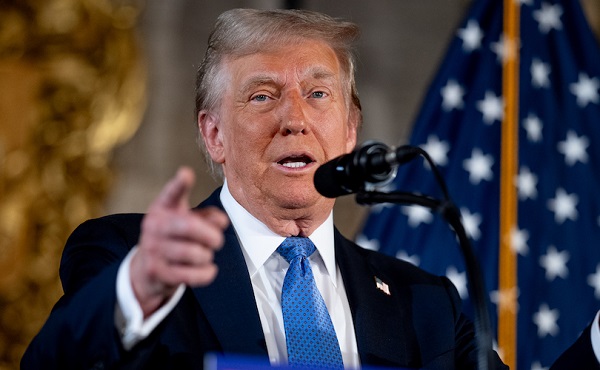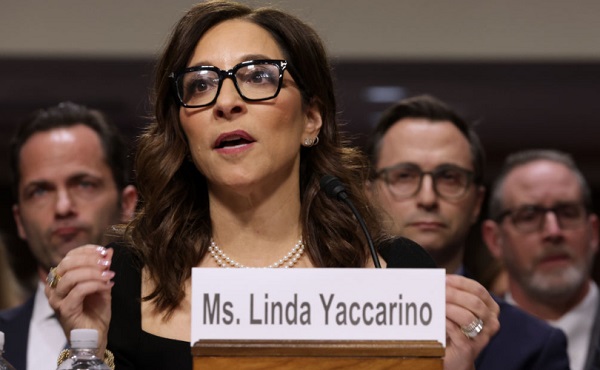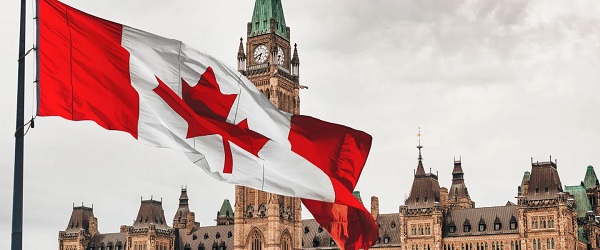Business
Ottawa once again defends egregious mismanagement during COVID

From the Fraser Institute
By: Jake Fuss and Tegan Hill
Two federal cabinet ministers criticized the report because it “fails to properly acknowledge that CEBA was designed and delivered during a global pandemic.” Translation—taxpayer money can be mismanaged so long as it’s delivered quickly, and we can use an emergency as an excuse for wasteful spending
According to a new report by Canada’s auditor general, in another of example of mismanagement and waste during the COVID pandemic, nearly 10 per cent—or $3.5 billion—of the federal government’s Canada Emergency Business Account (CEBA) loans went to ineligible businesses.
The report said “the program was not managed with due regard for value for money” and the government “did not effectively oversee the CEBA program.”
In response, two federal cabinet ministers criticized the report because it “fails to properly acknowledge that CEBA was designed and delivered during a global pandemic.”
Translation—taxpayer money can be mismanaged so long as it’s delivered quickly, and we can use an emergency as an excuse for wasteful spending. Accountability to the public is evidently an afterthought.
Of course, this is only the latest revelation of Trudeau government mismanagement during COVID. The government spent huge sums of taxpayer money on expensive programs such as the Canada Emergency Wage Subsidy (CEWS) and Canada Emergency Response Benefit (CERB). But a substantial share of this spending was simply wasted.
For example, an earlier report in 2022 by the auditor general found that ineligible individuals received $4.6 billion in CERB payments and other benefits. Ineligible recipients included 1,522 prisoners, 391 dead people and 434 children too young to be eligible. And 51,049 employers incorrectly received $9.9 billion in wage subsidies even though they did not have a sufficient drop in revenue to be eligible for the subsidies.
The federal government also spent billions on Canadians who probably didn’t need the money. An analysis published in 2020 by the Fraser Institute estimated that $11.8 billion in CERB payments went to eligible young people (ages 15 to 24) living with their parents in households with at least $100,000 in income. And an estimated $7.0 billion in CERB payments went to spouses in families with at least $100,000 in household income.
COVID-related programs were not only poorly targeted, but many payments surpassed the level required to restore the regular income of many recipients. According to the auditor general, the lowest-income Canada Recovery Benefit (CRB) recipients could take in more money from government benefits than from working, and the program “represented a disincentive to work, which impacted some labour markets at a crucial time when the need for employees was trending upwards.”
The total costs of fiscal waste during COVID are difficult to nail down. But our 2023 study estimated that one in four dollars of federal pandemic spending was wasted. That amounts to at least $89.9 billion in total fiscal waste. For context, that’s roughly what the British Columbia government spends annually in its entire budget for health care, education, social services, infrastructure, etc.
Finally, because the Trudeau government borrowed money to finance its excessive and wasteful COVID spending, Canadians will pay an estimated $21.1 billion in debt interest costs (over a 10-year period) that are directly attributable to this fiscal waste.
The new report by the auditor general is the latest proof of mismanagement by Ottawa during COVID, to the tune of billions of dollars in waste. Unfortunately, the government continues to scoff at the bill it’s handed to taxpayers for the waste it produced.
Business
Trump confirms 35% tariff on Canada, warns more could come

Quick Hit:
President Trump on Thursday confirmed a sweeping new 35% tariff on Canadian imports starting August 1, citing Canada’s failure to curb fentanyl trafficking and retaliatory trade actions.
Key Details:
- In a letter to Canadian Prime Minister Mark Carney, Trump said the new 35% levy is in response to Canada’s “financial retaliation” and its inability to stop fentanyl from reaching the U.S.
- Trump emphasized that Canadian businesses that relocate manufacturing to the U.S. will be exempt and promised expedited approvals for such moves.
- The administration has already notified 23 countries of impending tariffs following the expiration of a 90-day negotiation window under Trump’s “Liberation Day” trade policy.
Diving Deeper:
President Trump escalated his tariff strategy on Thursday, formally announcing a 35% duty on all Canadian imports effective August 1. The move follows what Trump described as a breakdown in trade cooperation and a failure by Canada to address its role in the U.S. fentanyl crisis.
“It is a Great Honor for me to send you this letter in that it demonstrates the strength and commitment of our Trading Relationship,” Trump wrote to Prime Minister Mark Carney. He added that the tariff response comes after Canada “financially retaliated” against the U.S. rather than working to resolve the flow of fentanyl across the northern border.
Trump’s letter made clear the tariff will apply broadly, separate from any existing sector-specific levies, and included a warning that “goods transshipped to evade this higher Tariff will be subject to that higher Tariff.” The president also hinted that further retaliation from Canada could push rates even higher.
However, Trump left the door open for possible revisions. “If Canada works with me to stop the flow of Fentanyl, we will, perhaps, consider an adjustment to this letter,” he said, adding that tariffs “may be modified, upward or downward, depending on our relationship.”
Canadian companies that move operations to the U.S. would be exempt, Trump said, noting his administration “will do everything possible to get approvals quickly, professionally, and routinely — In other words, in a matter of weeks.”
The U.S. traded over $762 billion in goods with Canada in 2024, with a trade deficit of $63.3 billion, a figure Trump called a “major threat” to both the economy and national security.
Speaking with NBC News on Thursday, Trump suggested even broader tariff hikes are coming, floating the idea of a 15% or 20% blanket rate on all imports. “We’re just going to say all of the remaining countries are going to pay,” he told Meet the Press moderator Kristen Welker, adding that “the tariffs have been very well-received” and noting that the stock market had hit new highs that day.
The Canadian announcement is part of a broader global tariff rollout. In recent days, Trump has notified at least 23 countries of new levies and revealed a separate 50% tariff on copper imports.
“Not everybody has to get a letter,” Trump said when asked if other leaders would be formally notified. “You know that. We’re just setting our tariffs.”
Business
Trump slaps Brazil with tariffs over social media censorship

From LifeSiteNews
By Dan Frieth
In his letter dated July 9, 2025, addressed to President Luiz Inácio Lula da Silva, Trump ties new U.S. trade measures directly to Brazilian censorship.
U.S. President Donald Trump has launched a fierce rebuke of Brazil’s moves to silence American-run social media platforms, particularly Rumble and X.
In his letter dated July 9, 2025, addressed to President Luiz Inácio Lula da Silva, Trump ties new U.S. trade measures directly to Brazilian censorship.
He calls attention to “SECRET and UNLAWFUL Censorship Orders to U.S. Social Media platforms,” pointing out that Brazil’s Supreme Court has been “threatening them with Millions of Dollars in Fines and Eviction from the Brazilian Social Media market.”


Trump warns that these actions are “due in part to Brazil’s insidious attacks on Free Elections, and the fundamental Free Speech Rights of Americans,” and states: “starting on August 1, 2025, we will charge Brazil a Tariff of 50% on any and all Brazilian products sent into the United States, separate from all Sectoral Tariffs.” He also adds that “Goods transshipped to evade this 50% Tariff will be subject to that higher Tariff.”
Brazil’s crackdown has targeted Rumble after it refused to comply with orders to block the account of Allan dos Santos, a Brazilian streamer living in the United States.
On February 21, 2025, Justice Alexandre de Moraes ordered Rumble’s suspension for non‑compliance, saying it failed “to comply with court orders.”
Earlier, from August to October 2024, Moraes had similarly ordered a nationwide block on X.
The court directed ISPs to suspend access and imposed fines after the platform refused to designate a legal representative and remove certain accounts.
Elon Musk responded: “Free speech is the bedrock of democracy and an unelected pseudo‑judge in Brazil is destroying it for political purposes.”
By linking censorship actions, particularly those targeting Rumble and X, to U.S. trade policy, Trump’s letter asserts that Brazil’s judiciary has moved into the arena of foreign policy and economic consequences.
The tariffs, he makes clear, are meant, at least in part, as a response to Brazil’s suppression of American free speech.
Trump’s decision to impose tariffs on Brazil for censoring American platforms may also serve as a clear signal to the European Union, which is advancing similar regulatory efforts under the guise of “disinformation” and “online safety.”
With the EU’s Digital Services Act and proposed “hate speech” legislation expanding government authority over content moderation, American companies face mounting pressure to comply with vague and sweeping takedown demands.
By framing censorship as a violation of U.S. free speech rights and linking it to trade consequences, Trump is effectively warning that any foreign attempt to suppress American voices or platforms could trigger similar economic retaliation.
Reprinted with permission from Reclaim The Net.
-

 Also Interesting2 days ago
Also Interesting2 days ago9 Things You Should Know About PK/PD in Drug Research
-

 Business2 days ago
Business2 days agoWEF-linked Linda Yaccarino to step down as CEO of X
-

 Business2 days ago
Business2 days ago‘Experts’ Warned Free Markets Would Ruin Argentina — Looks Like They Were Dead Wrong
-

 Business2 days ago
Business2 days agoCannabis Legalization Is Starting to Look Like a Really Dumb Idea
-

 Bruce Dowbiggin1 day ago
Bruce Dowbiggin1 day agoThe Covid 19 Disaster: When Do We Get The Apologies?
-

 Media2 days ago
Media2 days agoCBC journalist quits, accuses outlet of anti-Conservative bias and censorship
-

 Business1 day ago
Business1 day agoCarney government should recognize that private sector drives Canada’s economy
-

 Automotive2 days ago
Automotive2 days agoAmerica’s EV Industry Must Now Compete On A Level Playing Field







